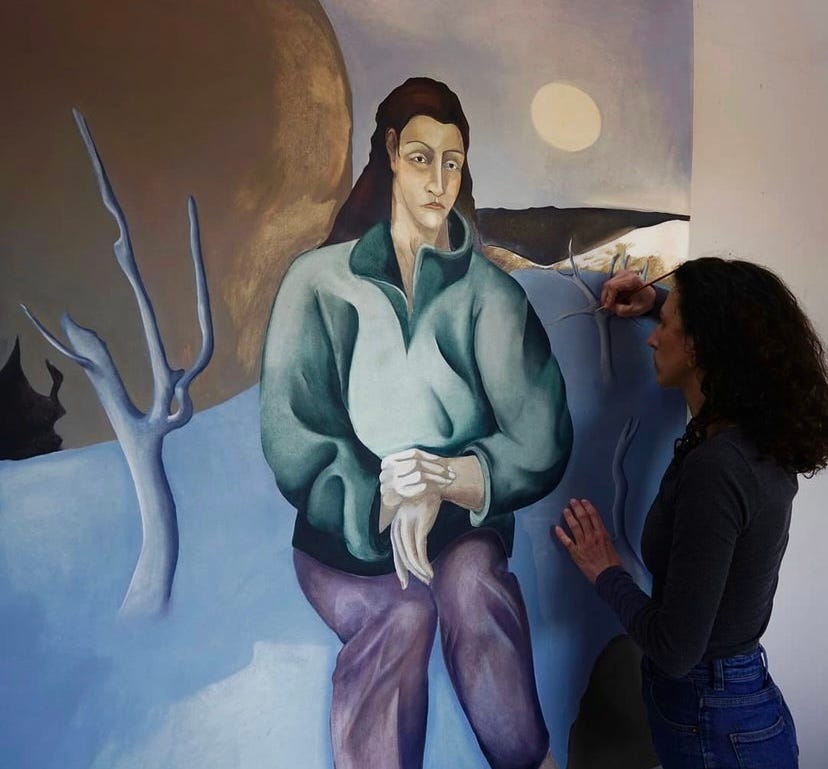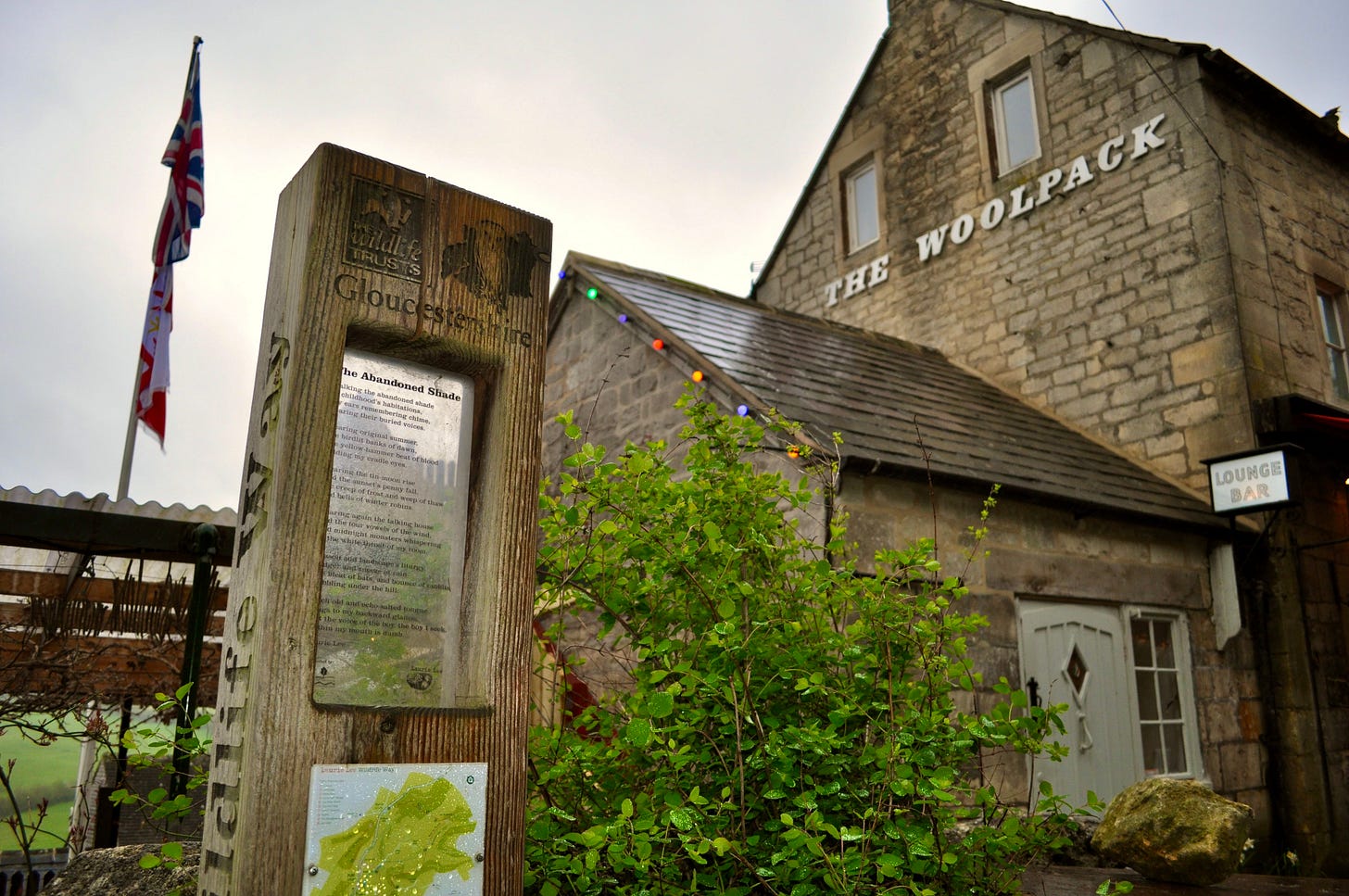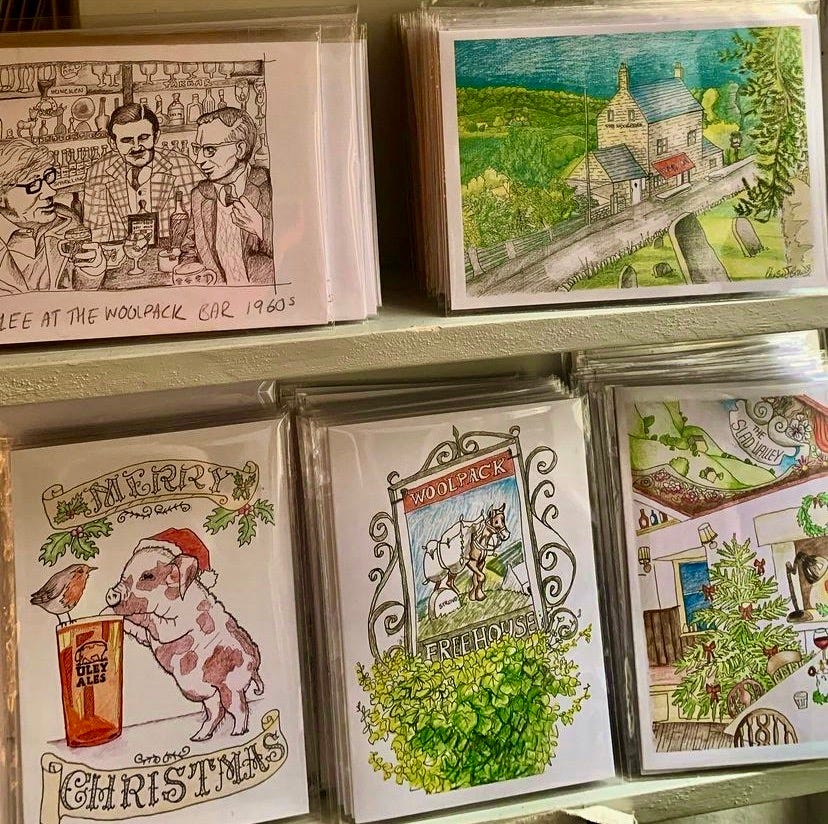The Artist's Realm: The Ultimate Pub for the Creative Mind
Deep in the Gloucestershire countryside, on the steep drop of a valley, sits a pub of peculiar standing.
The Woolpack is a curious little building, its creamy cotswold stone stacked precariously on the edge, gazing out across the fields and forests, its vermillion awning flagging down punters as they roar down the Slad road.
It is also, as many of the locals and staff will tell you with utterly infectious enthusiasm, the old stomping ground of the famed novelist and poet Laurie Lee (1914-1997), and it seems that the artistic energies that once fell into Lee’s cup from The Woolpack’s bar pumps are not running out anytime soon - the inn is bursting at the ‘mortar seams’ with artists.
The Woolpack, to those ‘not-in-the-know’, may seem somewhat of a classic British watering hole at face value. The out-of-the way location may seem odd. The dark green bar walls, bare stone and dark panelling may sound as if they make the establishment rather dreary inside, but in actual fact, these choices are strategic - they exacerbate The Woolpack’s breathtaking energy, standing and views in the remarkable Slad valley.
Over the years, elements have been incrementally added to this building, creating a somewhat hotch-potch floor plan, with undulating floors, tight staircases and tables squeezed into the bar area. It’s homey, and every element of the establishment seems to have been curated with a deep care - the newest addition, the dining room, was built with carefully chosen stone to match the already existing yellow ‘Oolitic Jurassic Limestone’, or, to the petrology layman, Cotswold stone. It is adorned with artistic nods to its past virtuosos - wrapped around every wall is a specially built box shelf, containing Laurie Lee’s prized - and impressively extensive - beer bottle collection. In a framed outcut on the ceiling of the dining room, you will find an embedded vintage backdrop, painted for a local pantomime and restored to its former glory.
Here, you will also inevitably get into unexpected but wonderful conversations with artists, and note the plural, because avoiding artists in this pub is almost unavoidable.
Sitting down with Raphie Barrett, a talented local oil painter and frequenter of The Woolpack, I was keen to delve into the reasons why this establishment in the rather bohemian countryside plays host to such a wide range of the creative and the curious.
An undeniable part of the artistic charm, I was told, comes from owner Daniel Chadwick.
Raphie pointed out the design behind The Woolpack. ‘It’s like it's a social art piece - not an experimental one per say - but he's constantly refining it, in the way that an artist does to their practice’, she said in a pleasant, musical voice. This choice to treat the Woolpack as an artistic piece itself is clearly a turning point, and a fundamental element in The Woolpack’s attraction for the more creative, or even free spirited of those looking for a tipple. ‘Because of who [Dan] is, he brings a clientele to The Woolpack that is unusual [...]’, and his own connections, which can lead to quite the interesting night - ‘it’s so much fun!’, she laughs, ‘you end up with a mixture where you can be talking to a famous artist, a jockey, someone who lives next door, who’s lived there their whole life and Richard E. Grant, all in one evening. So, it’s very stimulating!’

The tone The Woolpack seems to set for itself and its clientele is that of sociable grandeur, with a strong emphasis on the social aspect.
‘I wish there were more places like The Woolpack,’ Raphie confided in me, ‘where you would go there, and you would know that interesting people are going there to find people like you. I think that does happen in other industries, but it’s quite rare in art.’ Upon some prodding about sociability in the art world, Raphael explained it to me like this:
‘I think in the old days, if you were an artist, you would have had certain places, certain restaurants where you go, and you know that in those places you’re going to meet other poets, other artists, other writers, musicians, and you all get together to share ideas - that was part of the culture back then. It’s much less common now. The internet, Instagram, and the way people live their lives means that that kind of bourgeois, like, mixture of people communicating new ideas is much, much, much rarer.’
It seems that part of The Woolpack’s attraction then for artist’s to socialise is its ‘old-school’ traditions. Although not quite an establishment that employs a blanket ban on phone usage, you are much more likely to see conversation or an oddly named board game occurring on the bar tables.
Lhasa Collins, an artist who has sold her own art at The Woolpack’s local stand, agreed with the humanity and conversational aspect of the appeal. ‘I think socialising with people in such a remote place gives you more time to be introspective,’ she said, ‘and that kind of encourages artistic endeavours a little bit more than say if you're going to a nightclub every weekend’. Lhasa is one of the local artists who have been given an opportunity to sell their work in the pub, although, she says, that was no mean feat. ‘I think if I hadn't been given so much encouragement from other people, I probably wouldn't have ended up pushing it myself’ she told me, and that is all down to the past landlady and inhabitant of The Woolpack, Matilda Jones.
‘I would say it’s very seductive’, Matilda tells me. ‘You really do feel like you’re in this tapestry of artists, this collection of creative souls. I’ve worked with lots of creative people but this is a different kind of creativity.’ From its deep roots in poetry and literature to its extensive clientele of painters, dancers, sculptors and everything in between, The Woolpack is a living, breathing art piece, and a prime example of a location where artists are able to thrive, thanks to the weight placed it’s bohemian spirit rather than the liquor variety.




